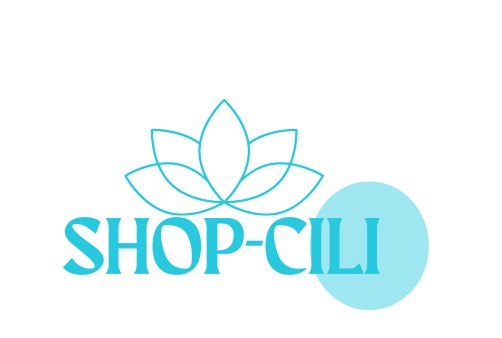“I didn’t feel worthy of getting help. I didn’t want to admit what happened to me. I thought it wasn’t bad enough.” – Danielle Churly
In the global fight against human trafficking, headlines tend to focus on sting operations, grim statistics and gaps in the law. But often overlooked is the internal terrain of survival, the long, quiet healing process.
Danielle Churly, an Ontario-based survivor and advocate, has made it her life’s work to shift that lens.
A survivor of child abuse, sexual exploitation and sex trafficking, Churly is helping to lead a growing conversation about trauma-informed care, survivor-led reform and gender equity. She serves on the Survivor Panel for the Dufferin/Caledon Domestic Assault Review Team, consults for organizations like the Women’s Support Network of York Region, and is a Canadian Anti-Human Trafficking Wing Member of the G100 Club, an international network of women leaders working collaboratively to address trafficking and gender-based violence.
But her journey didn’t begin in boardrooms or advocacy circles. It began in silence.
The long shadow of childhood trauma
On the podcast Conversations With My Sister’s Keeper, Churly recounts a childhood marked by instability, mental illness at home, physical and sexual abuse, and periods of homelessness.
“I left my parents’ house in high school, and ended up being sexually exploited,” she recalls. “I thought I had escaped, but I never processed what happened. That pain followed me.”
After surviving one abusive relationship, she enrolled in school and entered the helping professions. But unresolved trauma left her vulnerable again. She became entangled in another relationship, one that was financially, emotionally, physically and sexually abusive.
“I stopped working. My entire life became about surviving him.”
Then came her trafficker, met online through a dating app. What began as paid massages quickly escalated. She was coerced, controlled and isolated.
“I was trapped,” she says simply.
Human trafficking in context
The scope of trafficking is staggering. According to the U.S. Federal Bureau of Investigation, trafficking typically occurs in two primary forms:
- Commercial sex acts: Induced by force, fraud or coercion, or involving a minor.
- Involuntary servitude: When individuals are recruited, transported or held in forced labour through fraud or coercion.
These legal definitions capture only part of the picture. Danielle’s story makes vivid what these terms can obscure: that trafficking isn’t only about physical confinement. It’s about psychological manipulation, isolation, grooming and despair.
From silence to speaking out
Leaving her trafficker wasn’t a clean break. It took multiple attempts and a breaking point.
“There were times he almost convinced me to come back. But my body and mind had had enough. I couldn’t go on that way.”
Shame kept her quiet.
“I felt stupid,” she confesses. “I blamed myself. Why did I choose this guy? How did I allow this into my life again?”
It was her sister and childhood best friend who helped her begin to heal.
“They saw me when I couldn’t see myself. They reminded me I mattered.”
Early in recovery, she shared her story anonymously. Later, she found her voice in community spaces like the Women’s Support Network of York Region, an organization that supports trafficked women and those who have faced gender-based violence. There, she encountered a model of survivor-centred care, one that honoured her dignity, respected her autonomy and invited her leadership.
The ethics of empowerment
Today, Danielle is not only a survivor, but she is also a strategist, speaker and connector. As a Canadian Wing Member of the G100 Anti-Trafficking initiative, she is part of a growing network of lived experience advocates across the country—and beyond. The goal isn’t only to raise awareness, but to build sustainable relationships among survivor-leaders who can collaborate on solutions.
“It’s about coming together and sharing the different pieces that we each bring,” she explains. “Right now, we’re really focused on getting to know each other and building trust. From there, we’ll work as collective advocates.”
Through this emerging alliance, Danielle has connected with survivor-advocates and leaders across Canada, exchanging stories, ideas and strategies.
I’ve met some incredibly powerful women. It’s been inspiring to see how many of us are ready to lead—not just participate.
“I’ve met some incredibly powerful women. It’s been inspiring to see how many of us are ready to lead—not just participate.”
The wing is also incubating new projects and advocacy campaigns, all grounded in a commitment to lived experience leadership.
“We’re working on ways to support each other’s work, amplify our voices and make sure survivors are leading the charge, not just being tokenized. We have so many ideas in motion.”
At the same time, she’s mindful of how trafficking and survivors continue to be portrayed in public conversations.
“There are still a lot of misconceptions,” she says. “You often hear that human trafficking can happen to anyone, and while that’s technically true, it can also overlook the complexities. The reality is that trafficking is far more likely to happen to people already facing marginalization: poverty, a history of sexual abuse, being LGBTQ+, or dealing with systemic racism or mental illness.”
Danielle believes that without this context, awareness campaigns can flatten the issue.
“When we don’t talk about those deeper vulnerabilities, we risk erasing the very conditions that traffickers exploit.”
She also points to the persistent imagery that circulates in the media of chains, duct tape and people locked in basements.
“That can and does happen, but more often, trafficking looks like manipulation. Like control disguised as care. It’s psychological. It’s grooming, isolation and slowly being stripped of your autonomy. That’s the part that’s harder to visualize, but it’s often more common—and just as dangerous.”
A lifelong journey
Recovery, Danielle says, isn’t a destination. It’s a continuous practice.
“It took a lot of internal work to learn who I was again. Therapy, self-care and learning to trust people with my story, those were the turning points.”
That healing journey also means embracing her full self, not just as a survivor or advocate, but as a woman with passions, goals and joy.
“A big part of this journey is knowing what I bring to the table. I’ve worked incredibly hard—through school, through recovery, through every step of building my life again. I have carried a 4.0 GPA and will be graduating soon. I know I’m intelligent. I have education and professional experience, and I can offer so much more than just peer support.
“I can lead. I can consult. I can write policy papers and contribute to systems change. I want balance in what I do. Because I also have a full, rich life outside of this work. I love writing poetry, travelling, being outdoors. Those things are not separate from my advocacy—they’re part of what makes me who I am.”
Her journey of reclaiming identity and helping others do the same is now a guiding light in the anti-trafficking movement. She is part of a growing wave of survivor-leaders calling for an ethical reimagining of care, one that centres around healing, empowerment and dignity.
Danielle Churly is reshaping the narrative, from one of victimhood to one of leadership and vision. Her story reminds us that healing is political. That empowerment is ethical. And that when survivors lead, systems begin to change.
If she could speak to her younger self, the one still in the shadows of trauma and survival, Danielle says:
“I would tell her that she is loved and worthy, and she is not defined by the things and people around her. I would tell her to seek out the people who really love and support her. And I would give her a big hug.”
we all move forward when
we recognize how resilient
and striking the women
around us are– Rupi Kaur
«RELATED READ» HEAL FROM TRAUMA: 5 tips to get you started on the path»
image 1: Tima Miroshnichenko; image 2: Danielle Churly

